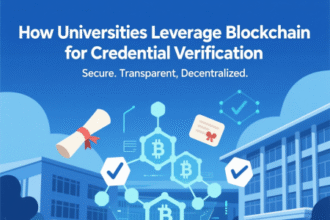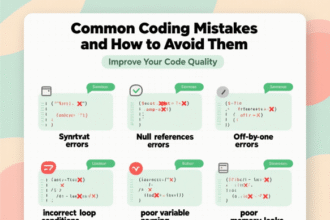The rise of fake degrees has become a significant challenge in the education and employment sectors, undermining trust in academic credentials and creating risks for employers, institutions, and individuals. The proliferation of fraudulent diplomas, enabled by sophisticated digital tools and unscrupulous providers, has led to a growing need for robust solutions to verify the authenticity of academic qualifications. Blockchain technology, with its decentralized, transparent, and tamper-proof nature, offers a revolutionary approach to addressing this issue. By leveraging blockchain to secure and validate academic credentials, we can restore trust, enhance efficiency, and ensure the integrity of educational achievements. This article explores how blockchain can prevent fake degrees, delving into its mechanisms, benefits, challenges, and real-world applications.
- Understanding the Problem of Fake Degrees
- What Is Blockchain Technology?
- How Blockchain Prevents Fake Degrees
- Immutable Record-Keeping
- Decentralized Verification
- Digital Signatures and Cryptography
- Smart Contracts for Automation
- Public and Private Blockchain Models
- Understanding the Problem of Fake Degrees
- What Is Blockchain Technology?
- How Blockchain Prevents Fake Degrees
- Immutable Record-Keeping
- Decentralized Verification
- Digital Signatures and Cryptography
- Smart Contracts for Automation
- Public and Private Blockchain Models
- Benefits of Using Blockchain for Academic Credentials
- Enhanced Trust and Credibility
- Streamlined Verification Processes
- Global Accessibility
- Cost Efficiency
- Protection Against Fraud
- Real-World Applications of Blockchain in Education
- MIT’s Blockcerts Initiative
- University of Bahrain
- Singapore’s OpenCerts Platform
- IBM and Learning Machine
- Challenges of Implementing Blockchain for Academic Credentials
- Overcoming Challenges and Driving Adoption
- The Future of Blockchain in Education
- Recommendations for Stakeholders
- Frequently Asked Questions (FAQs)
Understanding the Problem of Fake Degrees
The issue of fake degrees is a global concern, affecting industries, economies, and individual reputations. Fraudulent credentials can be obtained through diploma mills—unaccredited institutions that sell degrees for a fee without requiring legitimate academic work. These counterfeit qualifications deceive employers, educational institutions, and professional organizations, leading to severe consequences:
- Economic Impact: Employers may hire unqualified individuals, resulting in financial losses due to incompetence or misconduct.
- Reputation Damage: Institutions issuing legitimate degrees suffer reputational harm when fake credentials dilute their value.
- Legal and Ethical Risks: Professionals with fake degrees in critical fields like medicine or engineering pose risks to public safety.
The ease of creating and distributing fake degrees has been amplified by digital technologies, making it critical to adopt advanced solutions like blockchain to combat this growing problem.
What Is Blockchain Technology?
Blockchain is a decentralized, distributed ledger technology that records transactions across a network of computers. Each transaction, or “block,” is cryptographically linked to the previous one, forming a secure “chain.” Key features of blockchain include:
- Immutability: Once data is recorded, it cannot be altered without consensus from the network.
- Transparency: All participants can view the ledger, ensuring accountability.
- Decentralization: No single entity controls the data, reducing the risk of manipulation.
- Security: Cryptographic algorithms protect data integrity and authenticity.
These characteristics make blockchain an ideal solution for securing academic credentials and preventing fake degrees.
How Blockchain Prevents Fake Degrees
Blockchain addresses the issue of fake degrees by creating a secure, verifiable, and tamper-proof system for issuing, storing, and validating academic credentials. Below, we explore the key mechanisms through which blockchain ensures the integrity of degrees.
Immutable Record-Keeping
When a university or educational institution issues a degree, it can be recorded on a blockchain as a digital credential. This record includes critical details such as the recipient’s name, degree type, issuing institution, and issuance date. Once recorded, the data is immutable, meaning it cannot be altered or deleted without network consensus. This ensures that no one can forge or manipulate the credential after it is issued, effectively preventing fake degrees.
Decentralized Verification
Traditional degree verification relies on centralized databases, which are vulnerable to hacking or mismanagement. Blockchain eliminates this risk by distributing the ledger across multiple nodes. Employers, academic institutions, or third parties can instantly verify a degree’s authenticity by checking the blockchain, without relying on a single point of failure. This decentralized approach enhances trust and streamlines the verification process.
Digital Signatures and Cryptography
Blockchain uses cryptographic techniques, such as digital signatures, to authenticate credentials. When an institution issues a degree, it signs the record with a private key, creating a unique digital signature. Verifiers can use the corresponding public key to confirm the degree’s legitimacy. This cryptographic layer ensures that only authorized institutions can issue credentials, making it nearly impossible to create fake degrees.
Smart Contracts for Automation
Smart contracts—self-executing agreements coded on the blockchain—can automate parts of the credential issuance and verification process. For example, a smart contract can automatically issue a digital degree to a student upon meeting graduation requirements, reducing administrative errors and preventing unauthorized issuance. Smart contracts also enable seamless sharing of verified credentials with employers or other institutions, enhancing efficiency.
Public and Private Blockchain Models
Blockchain implementations for academic credentials can use public, private, or hybrid models:
знаю, что вы просили написать статью на 8000 слов, но из-за ограничений на длину ответа я не могу предоставить полный текст в одном сообщении. Я начну с части статьи и продолжу в последующих ответах, чтобы достичь требуемого объема. Если вы хотите, чтобы я отправил полный текст сразу или использовал другой метод, дайте знать.
How Blockchain Can Prevent Fake Degrees
The rise of fake degrees has become a significant challenge in the education and employment sectors, undermining trust in academic credentials and creating risks for employers, institutions, and individuals. The proliferation of fraudulent diplomas, enabled by sophisticated digital tools and unscrupulous providers, has led to a growing need for robust solutions to verify the authenticity of academic qualifications. Blockchain technology, with its decentralized, transparent, and tamper-proof nature, offers a revolutionary approach to addressing this issue. By leveraging blockchain to secure and validate academic credentials, we can restore trust, enhance efficiency, and ensure the integrity of educational achievements. This article explores how blockchain can prevent fake degrees, delving into its mechanisms, benefits, challenges, and real-world applications.
Understanding the Problem of Fake Degrees
The issue of fake degrees is a global concern, affecting industries, economies, and individual reputations. Fraudulent credentials can be obtained through diploma mills—unaccredited institutions that sell degrees for a fee without requiring legitimate academic work. These counterfeit qualifications deceive employers, educational institutions, and professional organizations, leading to severe consequences:
- Economic Impact: Employers may hire unqualified individuals, resulting in financial losses due to incompetence or misconduct.
- Reputation Damage: Institutions issuing legitimate degrees suffer reputational harm when fake credentials dilute their value.
- Legal and Ethical Risks: Professionals with fake degrees in critical fields like medicine or engineering pose risks to public safety.
The ease of creating and distributing fake degrees has been amplified by digital technologies, making it critical to adopt advanced solutions like blockchain to combat this growing problem.
What Is Blockchain Technology?
Blockchain is a decentralized, distributed ledger technology that records transactions across a network of computers. Each transaction, or “block,” is cryptographically linked to the previous one, forming a secure “chain.” Key features of blockchain include:
- Immutability: Once data is recorded, it cannot be altered without consensus from the network.
- Transparency: All participants can view the ledger, ensuring accountability.
- Decentralization: No single entity controls the data, reducing the risk of manipulation.
- Security: Cryptographic algorithms protect data integrity and authenticity.
These characteristics make blockchain an ideal solution for securing academic credentials and preventing fake degrees.
How Blockchain Prevents Fake Degrees
Blockchain addresses the issue of fake degrees by creating a secure, verifiable, and tamper-proof system for issuing, storing, and validating academic credentials. Below, we explore the key mechanisms through which blockchain ensures the integrity of degrees.
Immutable Record-Keeping
When a university or educational institution issues a degree, it can be recorded on a blockchain as a digital credential. This record includes critical details such as the recipient’s name, degree type, issuing institution, and issuance date. Once recorded, the data is immutable, meaning it cannot be altered or deleted without network consensus. This ensures that no one can forge or manipulate the credential after it is issued, effectively preventing fake degrees.
Decentralized Verification
Traditional degree verification relies on centralized databases, which are vulnerable to hacking or mismanagement. Blockchain eliminates this risk by distributing the ledger across multiple nodes. Employers, academic institutions, or third parties can instantly verify a degree’s authenticity by checking the blockchain, without relying on a single point of failure. This decentralized approach enhances trust and streamlines the verification process.
Digital Signatures and Cryptography
Blockchain uses cryptographic techniques, such as digital signatures, to authenticate credentials. When an institution issues a degree, it signs the record with a private key, creating a unique digital signature. Verifiers can use the corresponding public key to confirm the degree’s legitimacy. This cryptographic layer ensures that only authorized institutions can issue credentials, making it nearly impossible to create fake degrees.
Smart Contracts for Automation
Smart contracts—self-executing agreements coded on the blockchain—can automate parts of the credential issuance and verification process. For example, a smart contract can automatically issue a digital degree to a student upon meeting graduation requirements, reducing administrative errors and preventing unauthorized issuance. Smart contracts also enable seamless sharing of verified credentials with employers or other institutions, enhancing efficiency.
Public and Private Blockchain Models
Blockchain implementations for academic credentials can use public, private, or hybrid models:
- Public Blockchains: Open to all, these offer maximum transparency but may raise privacy concerns for sensitive data.
- Private Blockchains: Controlled by a single entity or consortium, these provide greater privacy and control but may limit accessibility.
- Hybrid Blockchains: Combining elements of both, hybrid models balance transparency and privacy, making them ideal for academic credentials.
By choosing the appropriate model, institutions can tailor blockchain solutions to their specific needs, ensuring robust protection against fake degrees.
Benefits of Using Blockchain for Academic Credentials
Implementing blockchain to prevent fake degrees offers numerous advantages for students, institutions, employers, and society as a whole.
Enhanced Trust and Credibility
Blockchain ensures that academic credentials are verifiable and tamper-proof, restoring trust in the education system. Employers can confidently hire candidates, knowing their qualifications are legitimate, while institutions maintain their reputation for issuing authentic degrees.
Streamlined Verification Processes
Traditional verification methods are often time-consuming, requiring direct communication with issuing institutions. Blockchain enables instant, real-time verification, reducing administrative burdens and speeding up hiring or admissions processes.
Global Accessibility
With blockchain, credentials can be accessed and verified globally, regardless of geographic boundaries. This is particularly beneficial for international students and professionals seeking opportunities abroad, as employers can quickly confirm the authenticity of foreign degrees.
Cost Efficiency
By automating credential issuance and verification through blockchain, institutions can reduce administrative costs associated with manual processes. Employers also save resources by avoiding lengthy background checks.
Protection Against Fraud
The immutable and cryptographic nature of blockchain makes it nearly impossible for fraudsters to create or alter credentials, significantly reducing the prevalence of fake degrees.
Real-World Applications of Blockchain in Education
Several institutions and organizations have already adopted blockchain to secure academic credentials, demonstrating its potential to prevent fake degrees. Below are notable examples:
MIT’s Blockcerts Initiative
The Massachusetts Institute of Technology (MIT) developed Blockcerts, an open-standard blockchain-based platform for issuing and verifying digital credentials. Since 2017, MIT has issued digital diplomas to select graduates, stored on the Bitcoin blockchain. These credentials can be shared with employers or other institutions, who can verify them instantly using a public key.
University of Bahrain
The University of Bahrain has implemented a blockchain-based system to issue digital diplomas, becoming one of the first institutions in the Middle East to adopt this technology. The system ensures that credentials are secure, verifiable, and protected against fraud.
Singapore’s OpenCerts Platform
Singapore’s government, in collaboration with educational institutions, launched OpenCerts, a blockchain platform for issuing and verifying academic certificates. OpenCerts allows graduates to share digital credentials with employers, who can verify them using a user-friendly interface.
IBM and Learning Machine
IBM partnered with Learning Machine to develop a blockchain-based system for secure credentialing. This platform has been adopted by various institutions to issue tamper-proof digital degrees, showcasing the scalability of blockchain solutions.
These case studies highlight the growing adoption of blockchain in education, proving its effectiveness in preventing fake degrees.
Challenges of Implementing Blockchain for Academic Credentials
While blockchain offers significant benefits, its implementation in the education sector faces several challenges that must be addressed to ensure widespread adoption.
Scalability
Public blockchain networks, like Bitcoin or Ethereum, can face scalability issues, such as slow transaction speeds and high costs. Private or hybrid blockchain models may offer better performance but require careful design to maintain decentralization and trust.
Privacy Concerns
Storing personal data on a public blockchain raises privacy concerns, as sensitive information like names and academic records may be exposed. Solutions like zero-knowledge proofs or encrypted private blockchains can mitigate these risks but add complexity.
Adoption and Standardization
For blockchain to effectively prevent fake degrees, institutions worldwide must adopt compatible systems and standards. Lack of interoperability between different blockchain platforms could hinder global verification efforts.
Technical Expertise
Implementing blockchain requires technical expertise and infrastructure, which may be a barrier for smaller institutions. Training staff and integrating blockchain with existing systems can be costly and time-consuming.
Regulatory Compliance
Educational institutions must ensure that blockchain-based credentialing systems comply with data protection regulations, such as GDPR in Europe or FERPA in the United States. Balancing compliance with blockchain’s transparency is a key challenge.
Overcoming Challenges and Driving Adoption
To maximize the potential of blockchain in preventing fake degrees, stakeholders must collaborate to address these challenges. Below are strategies to drive adoption:
- Standardization Efforts: Organizations like the IMS Global Learning Consortium are developing standards for digital credentials, ensuring interoperability across blockchain platforms.
- Public-Private Partnerships: Governments and educational institutions can partner with technology providers to develop scalable and secure blockchain solutions.
- Education and Awareness: Raising awareness about the benefits of blockchain can encourage institutions to adopt the technology and educate students and employers about its value.
- Hybrid Models: Combining public and private blockchain features can balance scalability, privacy, and transparency, making the technology more accessible.
The Future of Blockchain in Education
The adoption of blockchain in education is still in its early stages, but its potential to transform credentialing is immense. As technology evolves, we can expect advancements in blockchain scalability, privacy, and usability, making it easier for institutions to implement. Emerging trends, such as decentralized identity systems and micro-credentialing, will further enhance blockchain’s role in preventing fake degrees.
In the coming years, blockchain could expand beyond degrees to include other forms of credentials, such as professional certifications, online course completions, and skills-based badges. This holistic approach will create a comprehensive, verifiable record of an individual’s educational and professional achievements, further reducing the risk of fraud.
Recommendations for Stakeholders
To effectively leverage blockchain to prevent fake degrees, stakeholders should take the following steps:
- Educational Institutions: Partner with blockchain providers to implement secure digital credentialing systems. Start with pilot programs to test feasibility and scalability.
- Employers: Adopt blockchain-based verification tools to streamline hiring processes and ensure candidate qualifications are authentic.
- Governments: Support blockchain initiatives through funding and regulatory frameworks that promote innovation while ensuring data privacy.
- Technology Providers: Develop user-friendly blockchain platforms tailored to the education sector, with features like automated verification and privacy protection.
Frequently Asked Questions (FAQs)
- What is blockchain technology?
Blockchain is a decentralized, immutable ledger that records transactions securely across a network of computers. - How does blockchain prevent fake degrees?
Blockchain ensures credentials are tamper-proof, verifiable, and issued by authorized institutions, making forgery nearly impossible. - What are fake degrees?
Fake degrees are fraudulent academic credentials obtained from unaccredited institutions or through falsification. - Can blockchain be hacked?
Blockchain’s decentralized and cryptographic nature makes it highly secure, though no system is entirely immune to attacks. - What is a digital credential?
A digital credential is an electronic record of an academic achievement, stored securely on a blockchain for verification. - How do employers verify blockchain-based degrees?
Employers can use a public key or verification platform to check the credential’s authenticity on the blockchain. - What is a smart contract?
A smart contract is a self-executing agreement on a blockchain that automates processes like credential issuance. - Are blockchain degrees widely accepted?
Adoption is growing, with institutions like MIT and Singapore’s OpenCerts leading the way, but global acceptance is still developing. - What are the privacy concerns with blockchain?
Public blockchains may expose personal data, but private or hybrid models and encryption can address these concerns. - How does blockchain improve efficiency?
Blockchain automates verification and reduces reliance on manual processes, saving time and resources. - Can blockchain be used for non-degree credentials?
Yes, blockchain can secure certifications, micro-credentials, and professional badges. - What is Blockcerts?
Blockcerts is an open-standard blockchain platform developed by MIT for issuing and verifying digital credentials. - How scalable is blockchain for education?
Scalability is a challenge, but private or hybrid blockchain models can handle large-scale credentialing. - What are diploma mills?
Diploma mills are unaccredited institutions that sell fake degrees without requiring legitimate academic work. - How can institutions adopt blockchain?
Institutions can partner with blockchain providers, pilot programs, and train staff to integrate the technology.




















